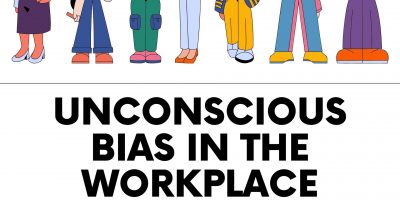
Unconscious Bias in the Workplace
To what extent are the organizational culture and business outcomes affected by unconscious bias? What is unconscious bias in the workplace, and what can be done about it?


Head of Content at Latana

Co-Owner of EMUCoupon

Consulting Director at JLL Australia
Gender equality and diversity in the workplace can positively affect organizations and companies. The question is, why do we still face gender disparity issues in the workplace today? How can companies address the challenges women are battling each day, and what steps should they take to solve them?
In collaboration with several managers and experts in their field, this article highlights women’s experiences in the workplace and the impact of COVID-19 on the matter.
According to the U.S Department of Labor, the number of women in the labor force in 2019 was 79,457,808, or a share of 47.4% of the global workforce. Only 32.2% of women are employed in the top 10 occupations.
Even though women are generally more likely to have earned a bachelor’s degree than men, they are far less likely to be promoted into manager-level jobs.
Thus, according to McKinsey’s Women in the Workplace 2018 report, only 38% hold managerial positions.
Also, contrary to popular belief, women are negotiating salaries and are asking for promotions at the same rate as men. Moreover, the retention rate of women was the same as men, but the effect that the COVID-19 pandemic had, especially on women, has led to some drastic shifts, such as women leading the “Great Resignation.”
Today, there are still many gender biases and challenges for women, such as the pay gap, work-life imbalance, sexual harassment, pregnancy discrimination, and more.
However, women make great leaders, and companies with a higher percentage of women are better environments for work for employees of all genders.
For everyone within an organization, gender diversity in the workplace translates to:
In addition, having more women in the workplace is associated with improved employee engagement and retention and higher average revenue.

But still, even with these statistics in mind and alongside companies’ promise to abandon gender discrimination in the workplace, in many cases, gender equality is just that – a promise.
Women of color have an even worse experience at work, facing more microaggressions and being even more underrepresented. The same can be said for women with disabilities, lesbian and bisexual women, and women who are “onlys,” i.e., only people of their gender or race in the company. Working moms of young children, especially when they are gender “onlys” in the company, face even more workplace challenges.
The outcome?
High burnout rates for women at all times. One in three women considers leaving the workforce or downshifting their careers.
Thus, it is no surprise that women-led the so-called “Great Resignation,” especially women managers. Childcare responsibilities and taking care of the elderly were a few of the most common reasons women walked out.
Head of content at Latana, Joy Corkery, shared how their company addressed this issue by saying, “Women have traditionally had a more difficult time accommodating family and work. Therefore, we provide the ability to make your own hours to ease the burden. We have many employees that start and finish at different times and take extended breaks during the day, to facilitate those needs. The loss of childcare during the pandemic has been extremely difficult on families, but Latana has allowed parents to take special leave.
However, it is not just organization and childcare that affected women during the pandemic. That’s why we introduced the Spill App for mental health support and Donut for causal meetups (interaction during the pandemic),” she adds.

The shifts made due to the COVID-19 pandemic changed the workplace forever. Companies adapted to remote or hybrid working models, preferred by both executives and employees.
According to a survey by Slack’s Future Forum, up to 97% of Black respondents preferred a fully remote or hybrid workplace due to microaggressions, discrimination, and other issues. Only 3% of Black workers chose the office-centric model compared with 21% white workers.
Moreover, 69% of women with children want to work from home at least one day a week once the pandemic is over, versus 56% of men with children.
The 2020 MetLife survey, on the other hand, reported that two in three women are planning to return to the workforce. Moreover, eight of ten are considering careers in science, technology, engineering, and mathematics (STEM), slowly changing the narrative from the “Great Resignation” to the “Great Reevaluation.”
Bryan Froud, Consulting Director at JLL, highlighted the importance of women choosing to work from home or in the office. He stated, “As a workplace strategist, I have spent the past two years helping clients re-evaluate the purpose of a workplace and changing employee expectations due to COVID and hybrid working.

To support women transitioning from COVID lockdowns and back into the office, some employees have been working with local childcare operators to either subsidize placements or provide more flexible hours for women to utilize childcare services noting the working day and week is much more flexible than before,” he ended.
Getting women back to work won’t be easy for companies and organizations. To do so, employers must reinvent the workplace to be a more supportive environment where employees of every gender and race can thrive.
Some of the things that can make a difference on every employee, especially on women, include:
Supporting the women in the workforce should be a continuous effort made throughout the year, not only in times of crisis such as a global pandemic. Elice Max, the Co-Owner of EMUCoupon, agreed with this:
“The pandemic sent most of our workforce home. During this time, some of my employees took a liking to the remote work option. I realize that I cannot simply ask women to return to the office and go back to their pre-pandemic schedules.
This is one of the reasons we are providing flexible schedules to women who might be looking after kids or have other household responsibilities. We have included the option for remote working days and hours during the week. The company’s HR department has been assigned to carefully listen to the concern of our women employees and offer them practical solutions.
As a women entrepreneur, I know we face more hurdles than our male counterparts. We are currently exploring even more ways to support our female staff,” she concluded.
While the COVID-19 pandemic has highlighted the existing challenges that women in the workplace were facing, it pinpointed the importance of gender equality within organizations.
Once again, it emphasized the need for equal hiring and promotion opportunities and the advantage of workforce flexibility. It also pinpointed the need for employers to focus on employees’ results and productivity.
Browse our curated list of vendors to find the best solution for your needs.
Subscribe to our newsletter for the latest trends, expert tips, and workplace insights!

To what extent are the organizational culture and business outcomes affected by unconscious bias? What is unconscious bias in the workplace, and what can be done about it?

Transform your workplace with actionable strategies to foster inclusivity, accommodations, and advocacy for employees with disabilities.

Elevate inclusivity and diversity in the workplace by celebrating Pride Month. Discover practical tips to foster a supportive and affirming environment that radiates acceptance, support, and celebration for every member of the LGBTQ+ community.

Unveil over 40 empowering statistics that showcase businesses’ strides towards a more inclusive and vibrant workplace.
Used by most of the top employee benefits consultants in the US, Shortlister is where you can find, research and select HR and benefits vendors for your clients.
Shortlister helps you reach your ideal prospects. Claim your free account to control your message and receive employer, consultant and health plan leads.